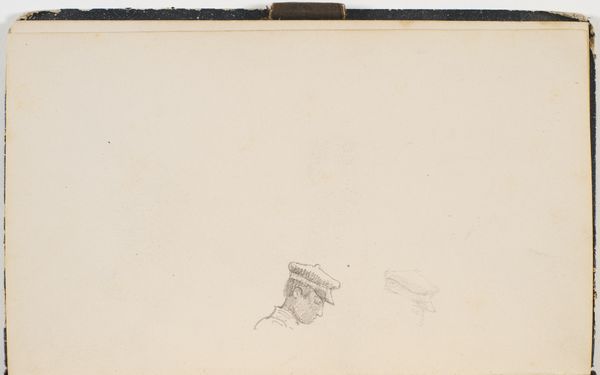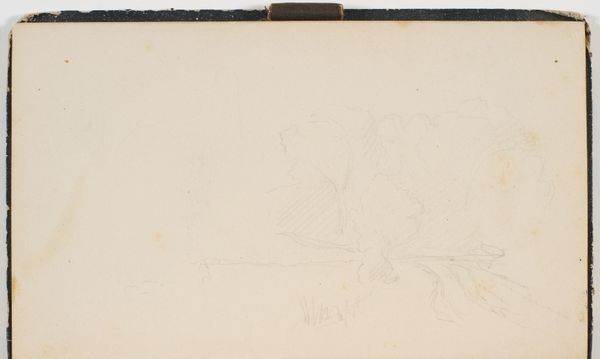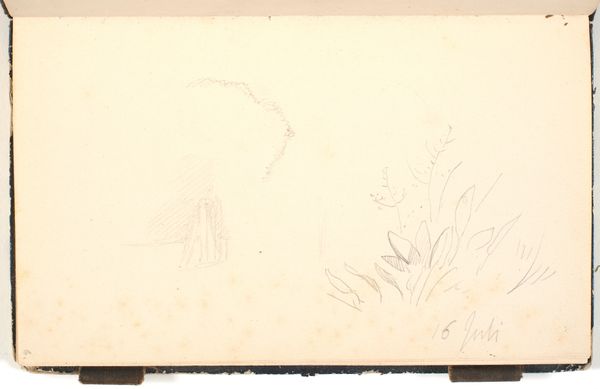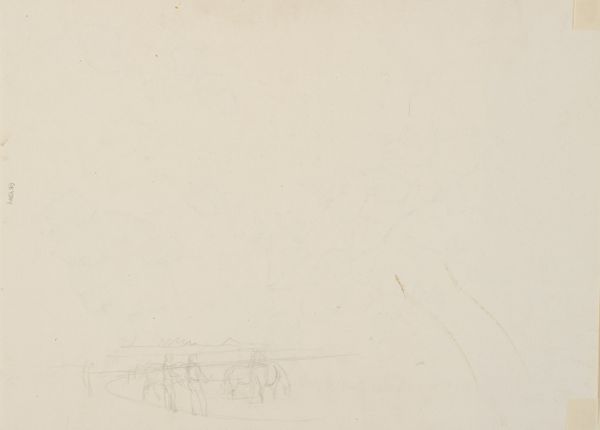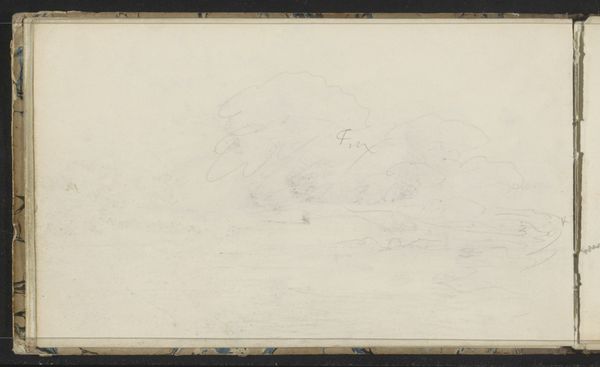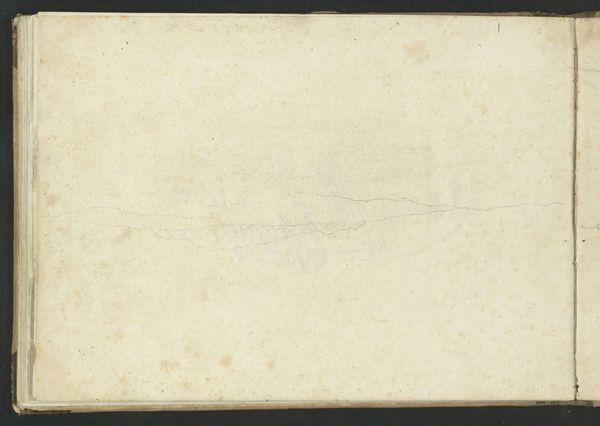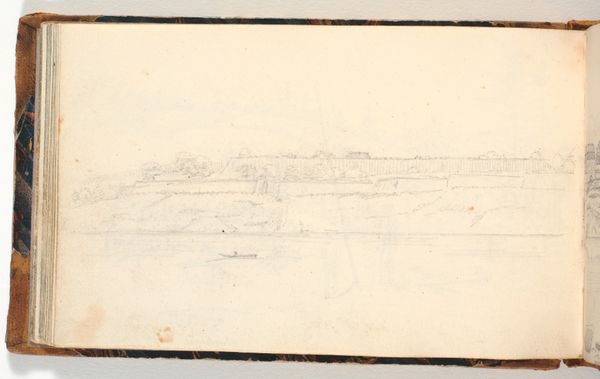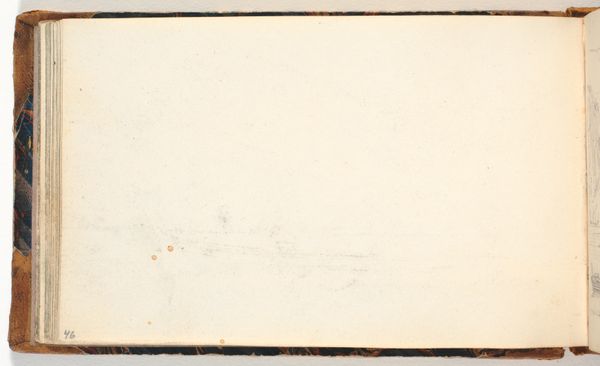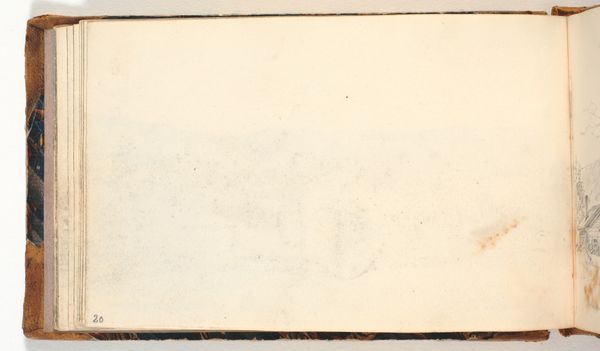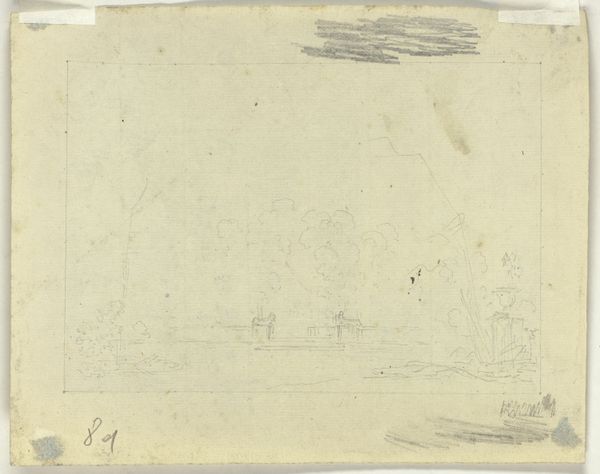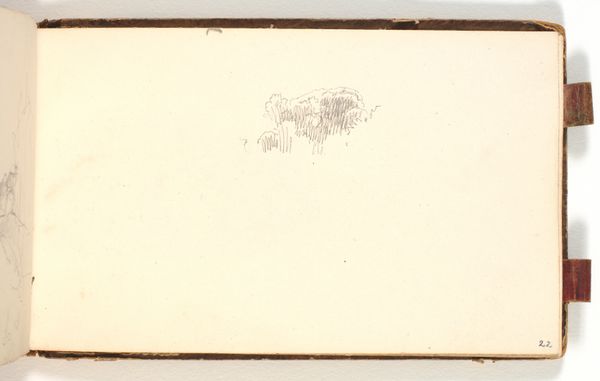
Dimensions: 215 mm (height) x 130 mm (width) (bladmaal)
Curator: Let’s turn our attention to this subtle work: "Siv i vandkant" – or "Reeds at the Water's Edge" – a drawing created in 1872 by P.C. Skovgaard. Editor: My first impression is of quiet observation. It’s so delicate; almost whispered onto the page. The vast expanse of what I presume is blank water holds a palpable weight, almost like negative space protesting its imposed emptiness. Curator: It's an intimate glimpse into Skovgaard’s practice. As an artist deeply committed to depicting the Danish landscape en plein air, this piece shows his dedication to capturing a specific moment. You can feel Skovgaard is really trying to immerse himself in the experience, isn’t he? Editor: I wonder, though, about this perspective of immersive capture and artistic subjectivity during an age of emerging Danish nationalism and independence movements. Skovgaard was working at a pivotal period in European politics; these drawings could also represent the struggle between objective representation, and artistic agency amidst conflict. What is "Danishness" beyond the land? Curator: That's a rich interpretation. His technique itself tells a story of its own, combining pencil, oil paint and even hints of watercolor to achieve a remarkable softness, it really captures that atmosphere of romantic realism so typical for the 19th century. It’s a scene imbued with cultural context too. It is crucial that these works represent danish ownership of this natural space, especially in a political climate demanding increased claims of rightful inheritance to the danish nationhood. Editor: Precisely! Skovgaard isn't simply depicting nature; he is part of that creation—shaping national identity and fostering patriotic sentiment with a brush. How was this sentiment received? Curator: The audience for landscape paintings like this had expanded as art institutions tried to bring more people in, art and cultural knowledge started belonging to everyone! These images gave the bourgeoisie a sense of ownership but perhaps for lower classes it solidified them in a shared understanding. A romantic painting that created new class tensions. Editor: Fascinating to think about how a drawing of reeds and water becomes a stage for ideological and class discourse! Curator: Indeed. It gives me so much to consider every time I see it. Editor: And hopefully for our listeners as well. Thanks for joining us!
Comments
No comments
Be the first to comment and join the conversation on the ultimate creative platform.
